
We independently review everything we recommend. When you buy through our links, we may earn a commission.
We break down our top 10 best Asics running shoes for 2025
From racing to tempo to slow days to trails, we got you covered
Any questions? Drop it in the comments. Otherwise, let’s get you educated
NOTE: This is an ongoing list and is constantly updated to reflect our current opinion.
American running companies seem to dominate the landscape nowadays, but it’s tough to top the long and storied history of Asics. Launched initially as Onitsuka Tiger, the Japanese shoe company has over 70 years of experience packed into its laces. That’s good news for you, as there’s an extensive list of shoes to fall in love with.
Especially since Asics has really turned the corner over the last couple years. For awhile, Asics was a ho-hum brand with seemingly the same shoes every year; however, they’ve now morphed into one of the best across-the-board brands in running. With fresh looks and designs and the performance to back it up, Asics is leading the way in giving runners what they want. We’ve run a ton of miles in all of these shoes, and can tell you that these are the best they have.
And while our recommendations are packed with plenty of new hotness, we can’t forget a few of the workhorses that got Asics to where it is today.
Here are our picks for the best Asics running shoes to get you pounding out the miles.
Asics’ primary (and most basic) midsole foam, designed to provide a lightweight shoe without sacrificing cushion and protection. FlyteFoam is tuned in different ways across ASICS products to optimize performance.
A cushioning foam material with excellent bounce. It absorbs high shock levels for long-distance runs and may provide some protection against ankle, shin and knee injuries.
A lighter and bouncier version of FlyteFoam Blast, found in the more premium shoes like the Novablast 4 and Gel-Nimbus 26.
A lower-density variation of FlyteFoam Blast that feels slightly softer and more responsive, used in shoes like the Novablast 5 and Glideride Max.
Asics’ most high-rebound and energy-efficient foam, used in its top-tier race day shoes like the Metaspeed Edge Paris and Metaspeed Sky Paris
More like AHARD, high-abrasion rubber that’s designed to be twice as tough as standard outsoles. Think of it as the shoe version of a car tire, but not on the same tier as AHAR Plus.
The most durable and sticky of Asics rubbers, AHAR Plus is what you’re looking for if you want the premium quality of outsole in an Asics shoe.
Asics’ proprietary rubber outsole that provides the perfect grip on a variety of terrains.
A combination of AsicsGrip technology and AHAR Plus rubber that gives better traction and softness. Featured in shoes like the Glideride Max.
Outsole support that mirrors the structure of your foot to provide support. Depending on its application, Trusstic systems can also help increase responsiveness during your run.
An updated form of Asics’ classic shock-absorbing cushion, often placed inside the heel of a shoe
Pretty much anything
8.8 oz. (250 g) for a US M9 (Unisex sizing)
45 mm in heel, 37 mm in forefoot (8 mm drop)
Fans of the Superblast, rejoice! A well-rounded update, the Asics Superblast 2 incorporates subtle yet substantial updates to maintain the integrity of the original, featuring a reformulated upper and a midsole with a Flytefoam Turbo Plus top layer and Flytefoam Blast Plus Eco bottom layer. One of our all-around favorites, it remains a multi-purpose workhorse to see you comfortably through plenty of miles.
Maintaining the same stack height of 45 mm in the heel and 37 mm in the forefoot, the Asics Superblast 2 continues to deliver the cushion, giving you a reason to ditch your pillow and drag yourself out of bed even on your sleepiest days. Picking up some AsicsGrip rubber on the outsole, it added on a slight bit of weight (0.4 oz if your curiosity is killing you), which isn’t really enough to be noticeable.
While the price point sits a bit high for a non-plated trainer, we think it’s justified by its versatility. Suited for daily training to race day, we have no doubt you’ll find a way to enjoy the Asics Superblast 2.
Read The Review
Daily training, long runs, some faster paces
9 oz. (255 g) for a US M9,
7.9 oz. (225 g) for a US W7
41.5 mm in heel, 33.5 mm in forefoot (8 mm drop)
One of our returning favorites, the newly updated Novablast 5 features minimal yet noticeable changes from its predecessor. That being said, iterating on an already-solid shoe is tough work, especially when you’re throwing upper mods into the mix.
So, the upper. Although re-engineered to be more lightweight and breathable, it leaves some structure to be desired for those with narrower feet. Still a strong do-it-all trainer, we’re not sure that’s going to end up being a dealbreaker here.
Biggest change we see in the Novablast 5 is the midsole swap, which now features Flytefoam Blast Max for a softer and lighter ride compared to last year’s Flytefoam Blast Plus Eco midsole. That being said, we still found plenty of stability given the softness and stack height. The swap even shaved off a bit of weight in the men’s version (0.4oz). Overall, the Novablast 5 still offers great value for such a high-cushioned ride, sitting at $140.
Read The Review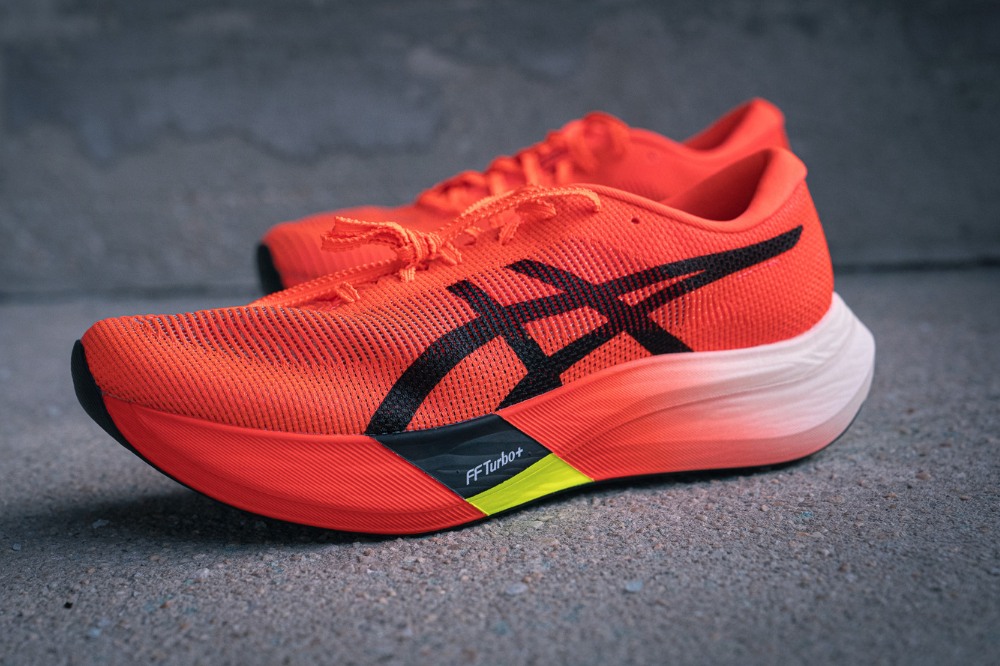
Race day
6.4 oz (183 g) for a US M9
39.5 mm in heel, 34.5 mm in forefoot (5 mm drop)
I mean, what list of Asics shoes would be complete without the cream of the crop? This pair is probably what you’ve been waiting for, and now it’s time to dig in. Let’s get one thing straight, though — this should really be the Metaspeed Sky 3 and Edge 3 because they’re the third generation of shoes. Instead, we have a fitting tribute to the upcoming Olympic Games.
Both shoes actually have the same amount of bouncy FlyteFoam Tubro Plus in the midsole, a barely legal 39.5 mm in the heel and 34.5 mm in the forefoot. Think of a Fast & Furious NOS-turbocharged version of the same foam used in the Novablast line. It’s light, bouncy, and smooth, and it’s as close to the Alphafly feeling as you can get. Asics has also toyed with the carbon fiber plate itself, moving it higher in the stack of the Sky Paris for even greater compression and bounce. On the Metaspeed Edge Paris, Asics moved the plate lower to assist in stabilization and provide more of a kick forward.
The AsicsGrip outsole is, well, super grippy and excels in wet conditions. The quality rubber outsole pairs perfectly with the wild midsole for a tame ride. The thin, one-piece mesh upper breathes incredibly well. It’s light on the foot and the environment, as it’s made of 100% recycled material. This environmentally conscious racer is here to save the world and shatter PRs.
Read The Review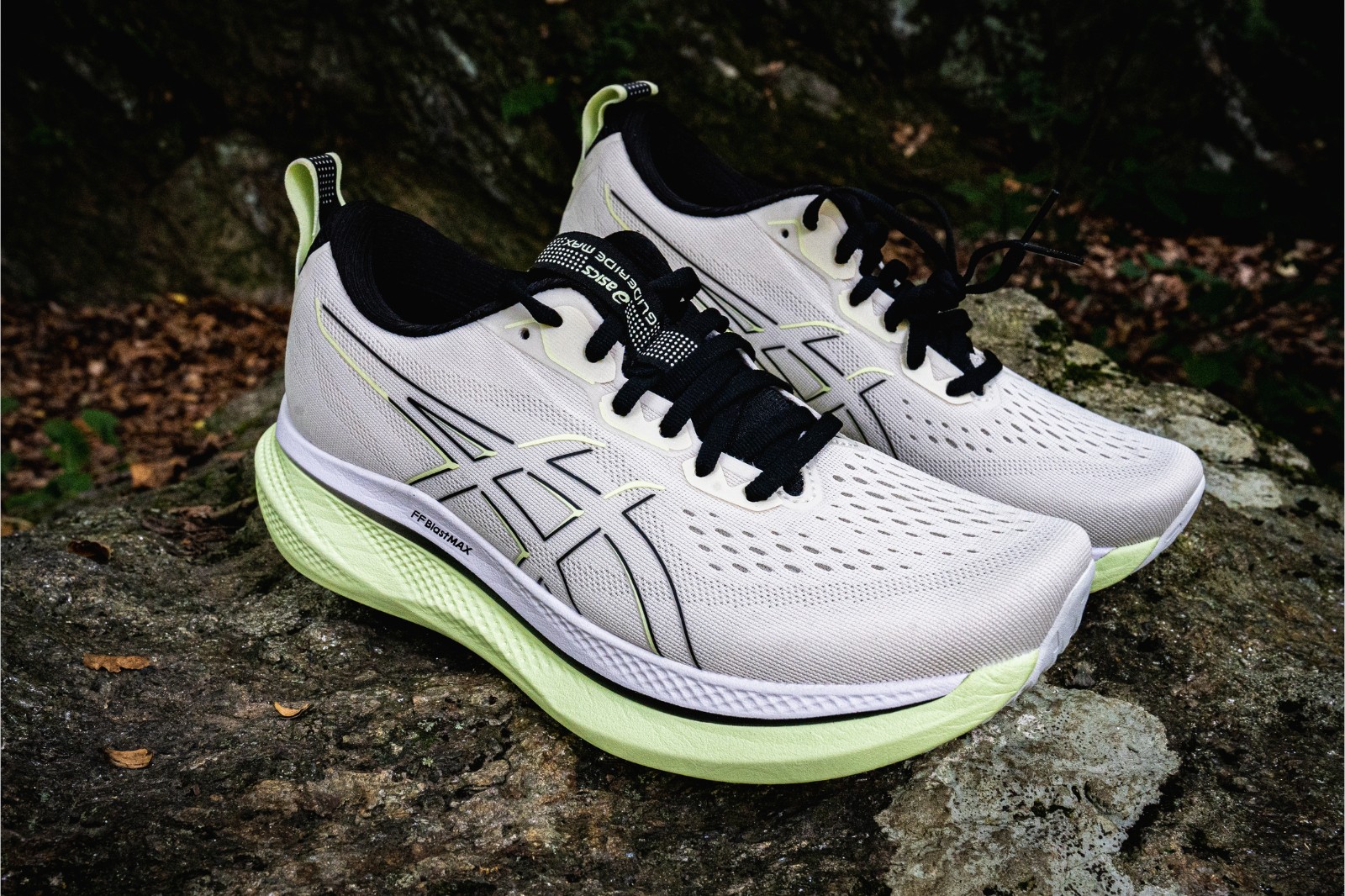
Long runs with a smooth rocker
10.1 oz. (287 g) for a US M9.5,
8.8 oz. (251 g) for a US W8
Men: 44 mm in heel, 38 mm in forefoot (6 mm drop)
Women: 43 mm in heel, 37 mm in forefoot (6 mm drop)
After a two-year hiatus, Asics seems to have cracked the code with the Glideride Max. While we’re a bit uncertain where this fits in their lineup, slap a “Max” onto anything and we’re sure to be intrigued. Did we mention it has an EVA plate too?
Revived from the remains of the Glideride 3, the Glideride Max is the first Asics shoe to roll out the new FlyteFoam Blast Max, which boasts a cloud-like softness and a responsive energy return in each step. Coupled with Asics’ Guidesole, it delivers a balanced rocker that has you set up for some smooth, well-cushioned miles.
Tack on the extra-grippy Hybrid AsicsGrip outsole too and you’re good to hit the road for Sunday’s Church of the Long Run. Nimbus-esque in cushion with the added glide (see what we did there) of the rocker, the Glideride Max will find a way to sneak into your rotation, even if you’re not quite sure how it ended up there.
Read The Review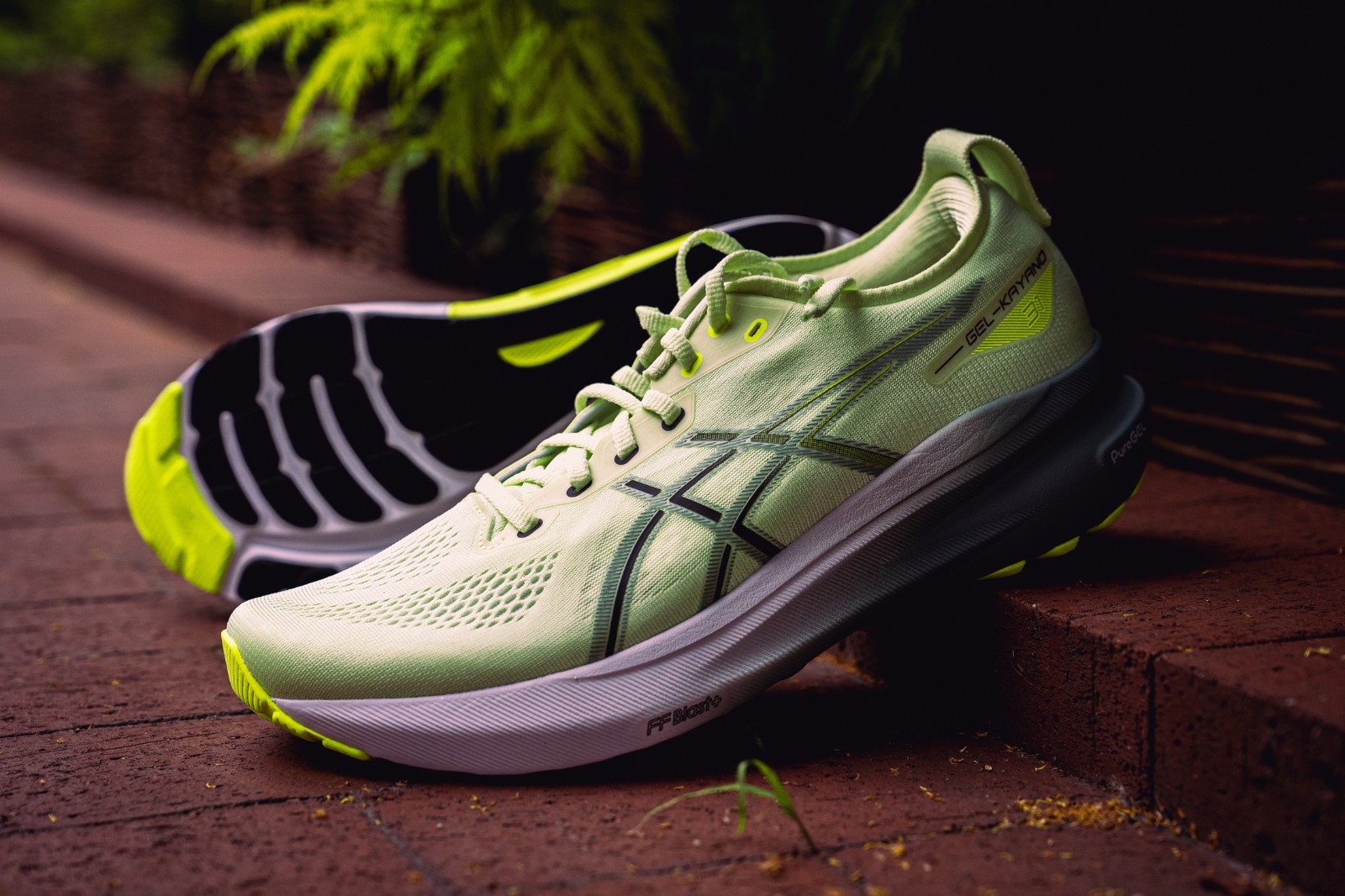
Stable road miles
10.7 oz. (305 g) for a US M9
9.4 oz. (266 g) for a US W7.5
Men: 40 mm in heel, 30 mm in forefoot (10 mm drop)
Women: 39 mm in heel, 29 mm in forefoot (10 mm drop)
The Asics team was hardly in the lab on this one, and we mean that in the best way possible. There’s nothing worse than when a breakthrough redesign is tweaked out of perfection, and after the stellar update we saw to the Gel-Kayano 30, we were hoping for the best with this version.
A fraternal (though nearly identical) twin to its predecessor, the Gel-Kayano 31 successfully carried over the highlights to remain a stable workhorse of a shoe that’ll last for the miles to come. Though, it may be the sweatier of the twins as the upper leaves something to be desired. Beyond that, our crew enjoyed the stability of the 4D adaptive guidance system which has an uncanny way of providing just the right amount of support. Keeping many of the same features including the PureGel heel and a FFBlast+ eco midsole, stepping into the Gel-Kayano 31 felt like a warm welcome home.
Read The Review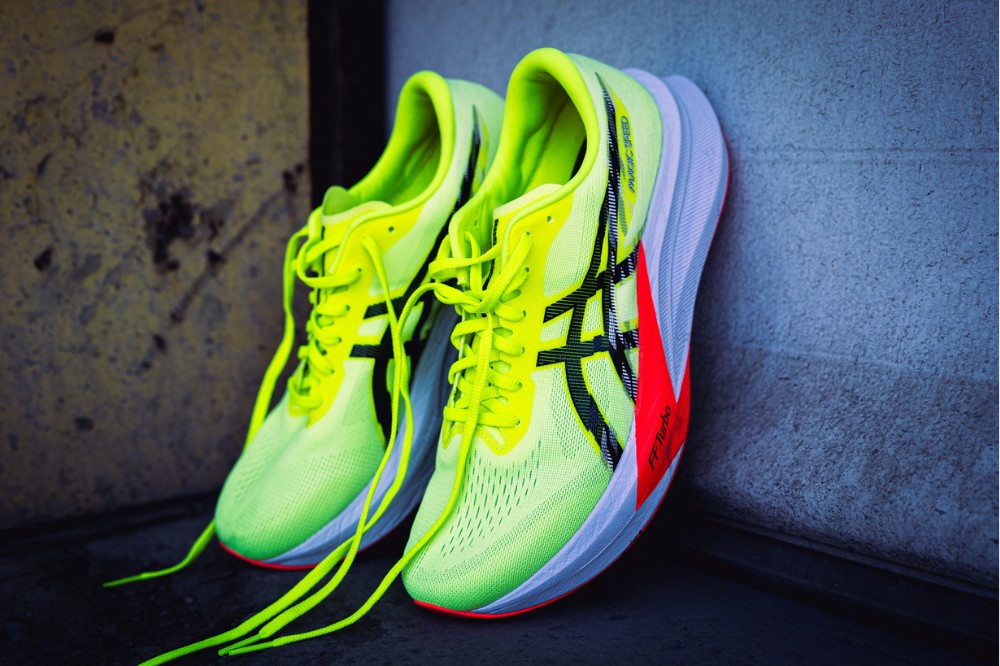
Tempo or race day up to half marathon
8.5 oz. (242 g) for a US M9
7.3 oz. (207 g) for a US W7
43.5 mm in heel, 35.5 mm in forefoot (8 mm drop)
Is this the best Asics Magic Speed yet? Our crew’s opinions varied, but it’s that variation that seems to be woven in the very DNA of the Asics Magic Speed family. Despite the variability we’ve dealt with between versions, the Magic Speed 4 still remains a versatile, multi-purposed shoe. Still it has a majority Flytefoam Blast Plus midsole, now with a puck of Flytefoam Blast Turbo (Asics’ premium race day foam) in the forefoot. And of course, impossible to forget, is the a full-length carbon resin plate.
Whether you’re looking for a budget racer, a more versatile tempo shoe, or are someone who is finally looking to dip their feet into the carbon-plated race world for the first time, the Asics Magic Speed 4’s multi-functionality and shape-shifting nature seems to play to its strength in the greater Asics lineup.
Read The Review
$150
Ultra distances up to 100 miles, thru hiking
10.8 oz (306 g.) for a US M9,
9.4 oz. (266 g.) for a US W7
43 mm in heel, 38 in forefoot (5 mm drop, men’s)
Our trail team enjoyed the first version of the Trabuco Max, but the newest version takes it to a whole different level. Literally. With a 43 mm heel stack of Flytefoam Blast+ foam (the same foam found in the Novablast 3), this thing is the most max cushion trail shoe we’ve tested to date. It’s also one of the best iterations of Asics Flytefoam Blast and we wouldn’t hate to see this in an actual road shoe.
Usually, that type of stack height in a trail shoe spells disaster, since a larger stack height means increased instability. But not here. With a wide base covering a large area of ground, you just get a ton of cushion in a shoe that can go any distance. That goes for terrain as well. The Asicsgrip outsole provided surprisingly good traction on creek crossings and deep mud, allowing us to bomb downhills while others were forced to walk.
In short, this is a monster truck for trails, and you’ll want to go full Gravedigger once you get your feet in it.
Read The ReviewShop The Shoe
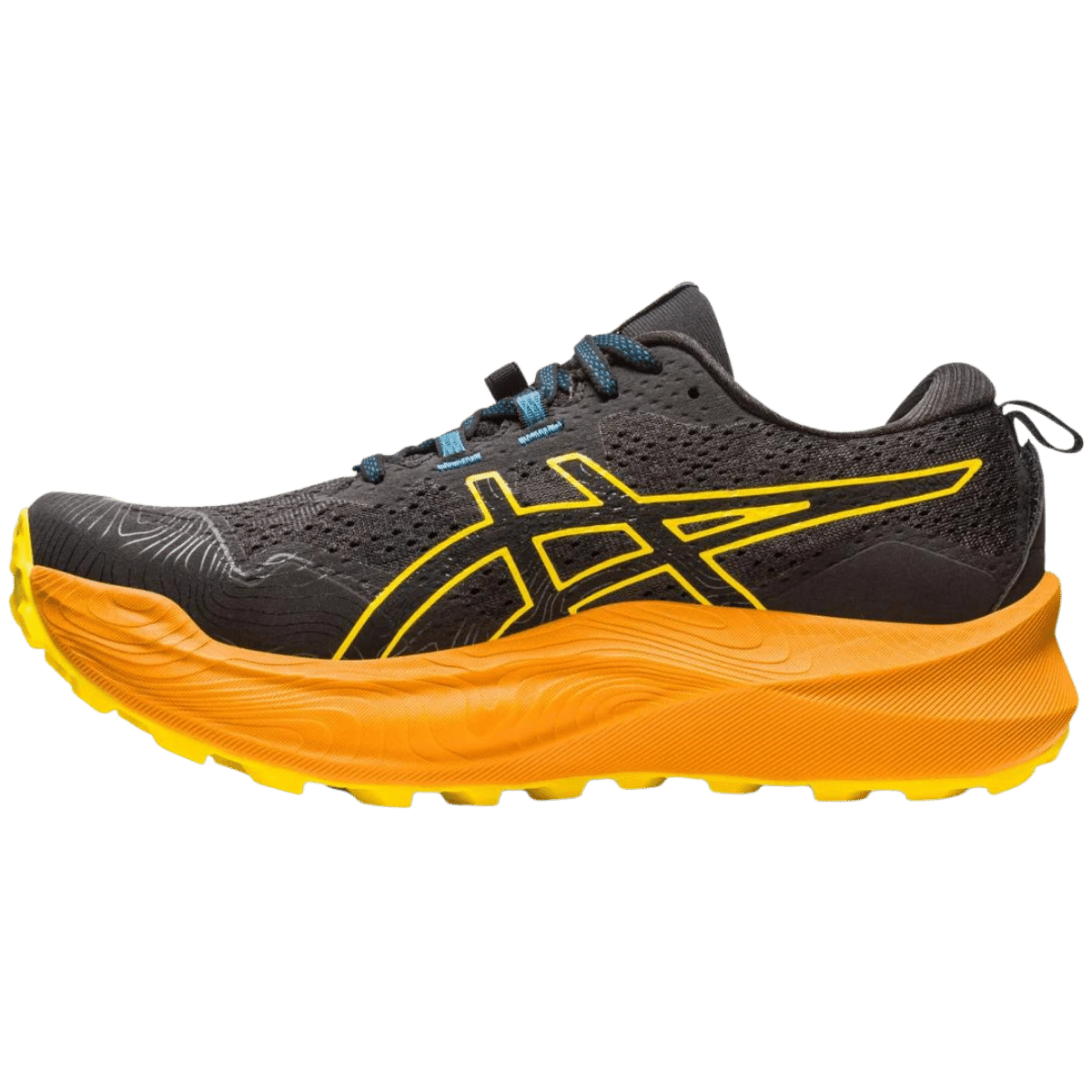
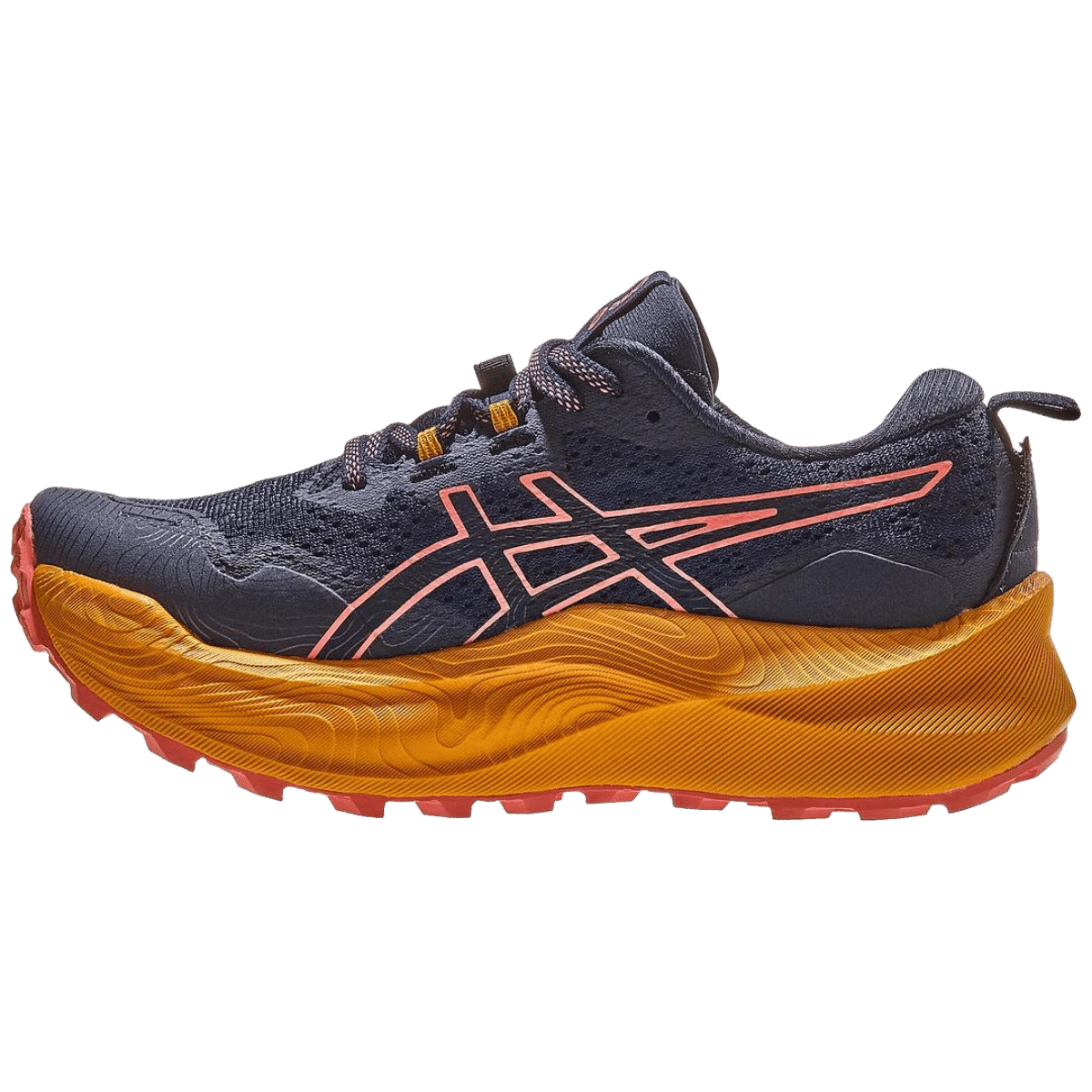
All of our recommendations come directly from our feet to your screen. We test countless running shoes here at Believe in the Run, and we let our reviews guide our decisions. However, we also consider other reviews and our BITR community, as not every runner has the same experiences. We also aim to stick with shoes that are currently available so you can give our recommendations a try.
Want to learn more about how our review process works? Check out this guide.
Have something to say? Leave a Comment
If price didn’t matter, would you pick up the meta speed series for all your runs or would the Novablast or Nimbus 25 still be the choice? The super blast needs new colors before I think about those.
If price doesn’t matter, then Superblast all the way. Would save the Meta series only for speedwork or race days.
No Fuji Lite? My favourite shoe for summer trail running – light, flexible and nimble – somehow I always have fun in them.
I was on the fence about getting the Novablast 3 until they came out with the TR. They corrected the only possible weakness of the show. I got over 90 miles on them, most on runs below 0F. They still look like they just came out of the box. Looking forward to another 500miles in them.
Thank you for this feedback! Definitely going to try out the superblast now.
Is this updated? Looks like only the Superblast 2 was added (Novablast 5, Gel-Nimbus 27, Magic Speed 4, or Gel Kayano 31, GT-2000 13, and Trabuco Max 4 are all the new models)
How does the Magic Speed 4 compare to the Deviate Nitro 3? I love my Deviate, but it’s a tad narrow and regardless of how I lace it up it starts to bother me on runs longer than 8 miles. I’m a clydesdale north of 200lbs. and love a good plated option with some pop.